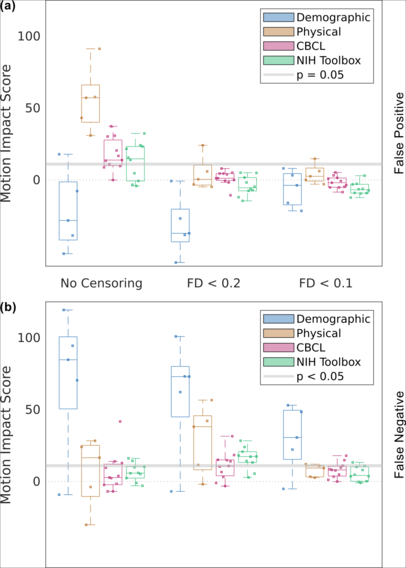Recent searches
Search options
Ever wondered if your interesting brain-behavior correlation was somehow impacted by head motion, but were afraid to ask? We’ve created a motion impact score for detecting spurious brain-behavior associations. (Preprint cross-posted from Twitter.) https://biorxiv.org/cgi/content/short/2022.12.16.520797v1
Our motivation for creating the motion impact score came from the realization that lots of behavioral traits (87% in the ABCD study) are, surprisingly, correlated with head motion. Even seemingly unrelated traits like matrix reasoning score were correlated with motion.
And the effect size of residual head motion on functional connectivity is huge -- larger than pretty much any behavioral variable. Yes folks, that's residual head motion, after the standard ABCD study data processing, and even after frame censoring at FD < 0.2 mm!
The principle behind the motion impact score is so simple! We know head motion varies from second-to-second while behavioral traits are stable over time. We split our fMRI timeseries and compute separate connectivity matrices for the high- and low-motion halves. We subtract the low-motion matrix from the high-motion matrix. The behavioral connectivity is the same in both halves, so it cancels out, and only motion artifact is left.
We call motion artifact that inflates the brain-behavior correlation a false positive motion impact score, and motion artifact that obscures the brain-behavior correlation is a false negative motion impact score.
The good news is that frame censoring does a fantastic job of reducing false positive motion impact score. That means if you motion censor your data after standard processing then you are much less likely to get spurious results due to motion. Highly recommend trying it!


